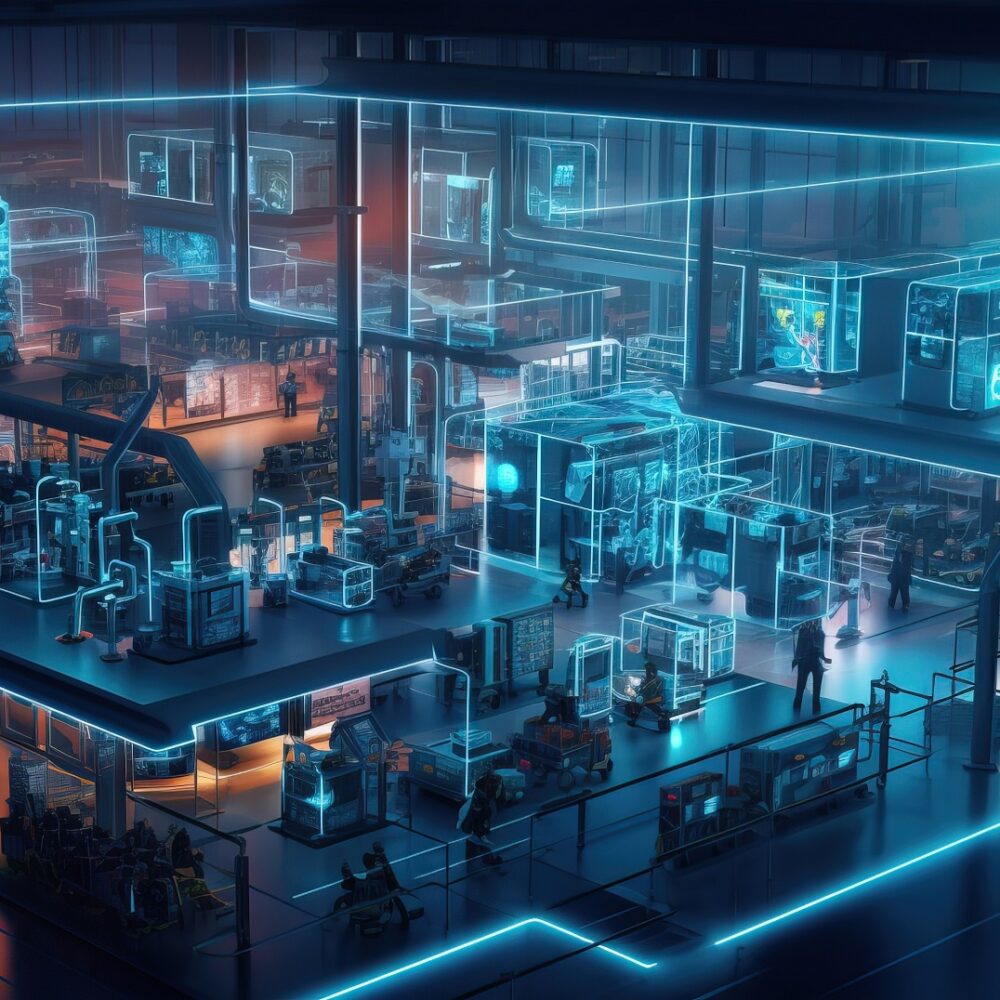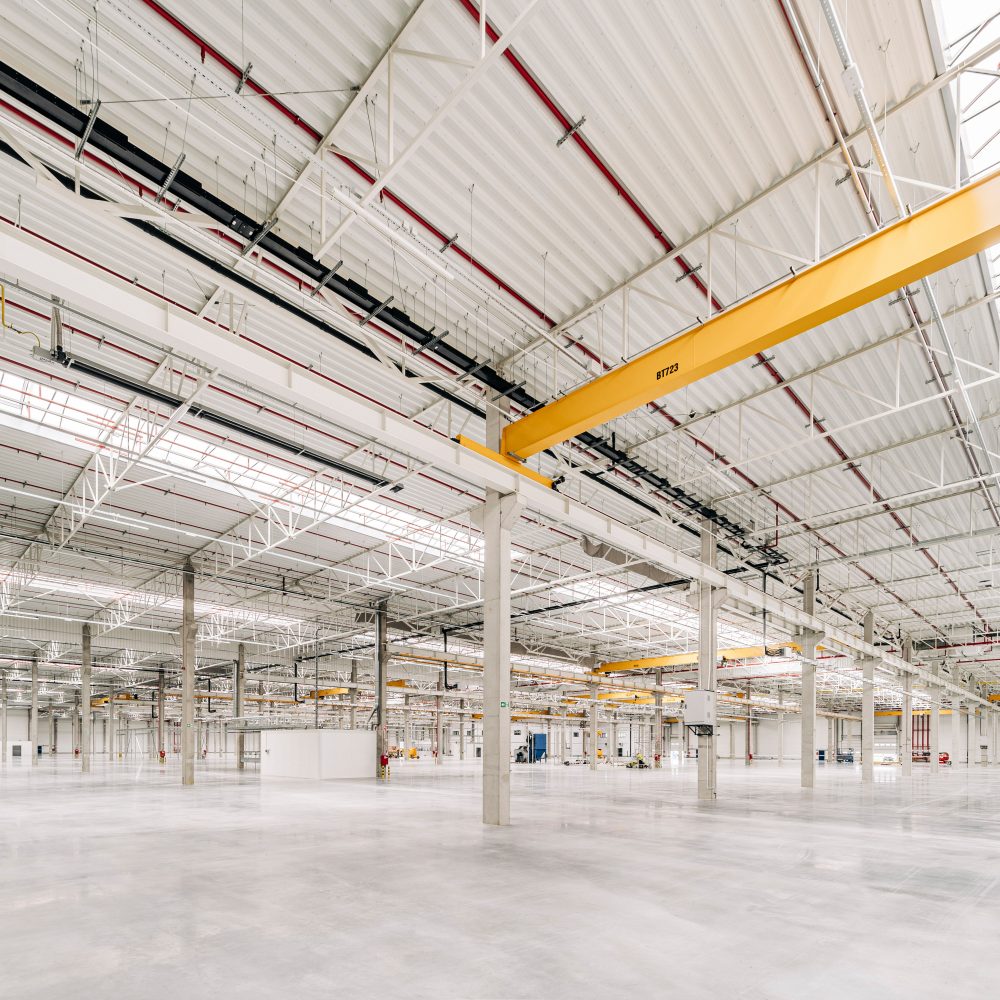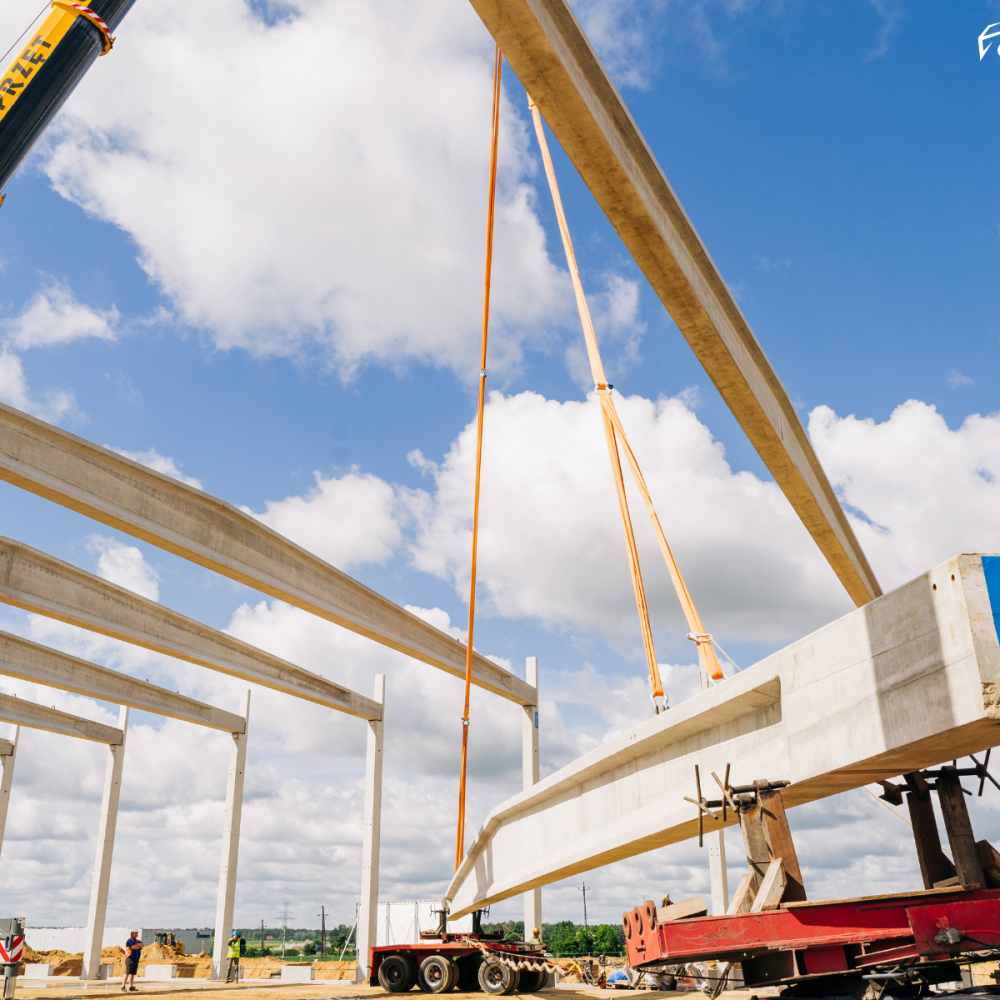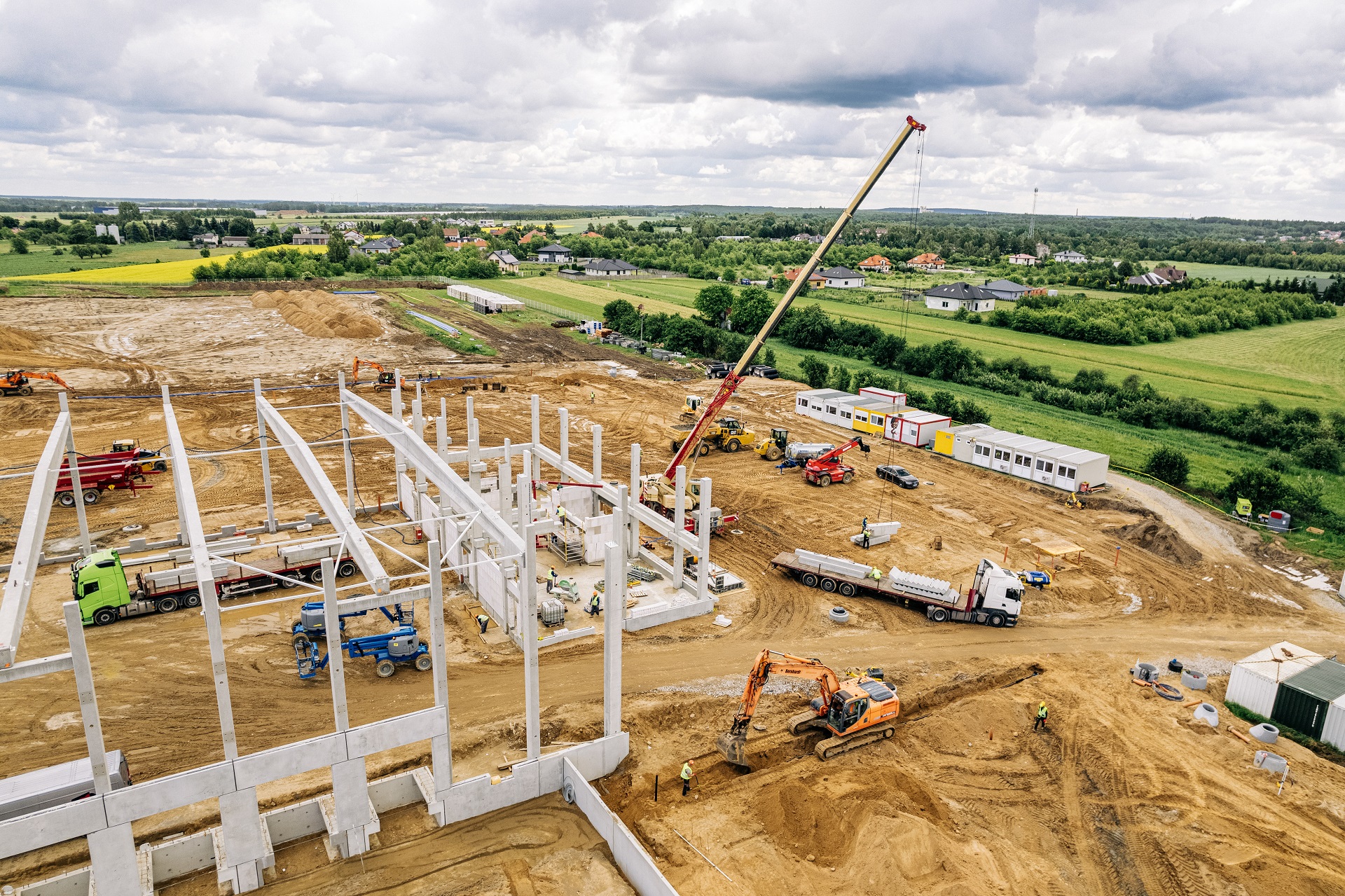
The construction of an industrial hall is a multi-task process in which the construction work is carried out according to set technology and time requirements. The construction of an industrial hall is a highly specialised and mechanised process and therefore requires a particularly appropriate and professional organisation. The timely and trouble-free completion of a facility depends on three main groups of organisational issues and these include the organisation of the site facilities, organisation of the site and the organisation of the work on site. The following subsections will discuss the basic issues related to these aspects of organising the construction of an industrial hall.
Organisation of the hall’s construction facilities
Although on the surface, it may appear to be a marginal element of the construction process, it is one of its most important areas. This is because the construction site is first and foremost the first place on the site that is organised once the construction has started. The site office, welfare facilities (welfare containers) for the brigades, storage containers and open storage areas are located in this area. Proper organisation of the construction facilities requires an analysis of the design of the building to be erected. An industrial hall is a facility that is armed with electricity, water, and gas as required. Moreover, underground rainwater retention tanks or fire water storage tanks are often built. The location of all underground and aboveground networks and facilities has an impact on the location and layout of the construction facilities, which, by design, should be positioned so that they do not need to be moved. In particular, it is worth thinking about the layout of the site office and the staff area to avoid moving the containers, which are also temporarily provided with electricity, water and domestic waste for the duration of the construction work. In the case of the location of the site office, it should also be borne in mind that it should be easily accessible to anyone entering the site. This is because the site office must be connected to the public road so that everyone concerned can safely reach the site manager and the road to the site office does not pose a danger to those travelling along it. Industrial halls are large-scale structures so it is obvious that, with a limited plot of land, you have an equally limited amount of storage space on site. It may, therefore, be necessary to reorganise and relocate storage yards many times, which is, however, incomparably less onerous than reorganising and relocating staff facilities.
Organisation of the hall construction site
The organisation of the construction site is significantly linked to the schedule adopted and therefore to the sequence of work carried out. Work almost always starts with the removal of the top non-structural layer of organic soil (humus). Often, in the case of industrial hall construction, sanitary and plumbing works are carried out which, when carried later on, during the erection of the main building, would make communication around it much more difficult. An important aspect in the organisation of the construction site is therefore the provision of the required traffic routes that allow access for the cranes and hoists needed to carry out the erection work. A well-organised construction site ensures trouble-free internal transport of stored materials and enables the unloading of deliveries minimising the creation of congestion in traffic routes.
Organisation of work on the site
Proper organisation of work on site ensures that the project can be completed on time and without failure. The proper, and therefore timely, execution of tasks on the construction site relies heavily on the ability to estimate the time required for the preceding tasks. In the case of the construction of industrial halls with large surface areas, i.e. multi-aisle structures, it is often the practice to start the trapezoidal sheet metal roofing work already before the entire steel structure has been completed. This is because it is sufficient to completely assemble and brace a selected and skilfully specified part of the building for which the roofing sheet installation begins. Work on the installation of the wall cladding or the roof covering with thermal and waterproofing insulation progresses in an analogous way and overlaps with further works involving the installation of equipment such as heaters, cable trays and roof drainage that is suspended from the roof and walls. The organisation of work on an industrial hall construction site requires that work be carried out on multiple levels and areas, with the right amount of equipment and workforce.
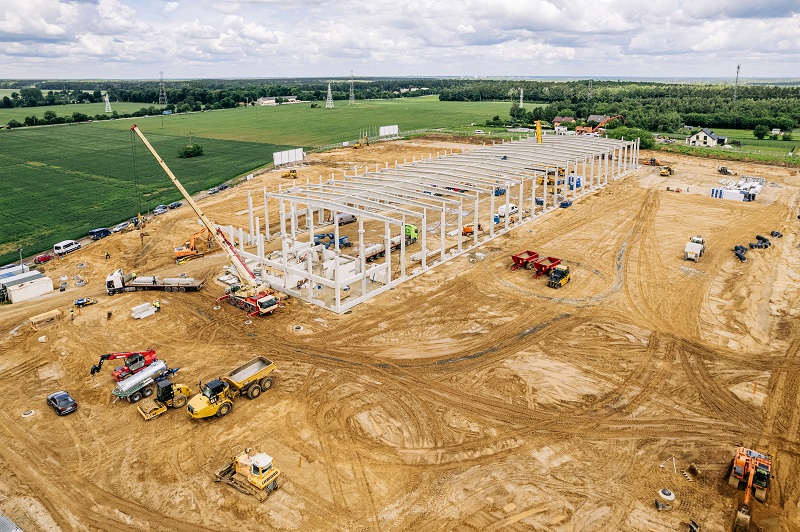
Therefore, the organisation of work on an industrial hall construction site is a process of multiple logical dependencies interacting with each other. Among other things, the article addresses the aspect of the interplay between the organisation of the construction site backup facilities the construction site itself, as well as the organisation of work on the site. Skilful construction management, by an experienced general contractor can anticipate certain events that can delay or hinder the whole process. Naturally, even the best planning will not prevent unforeseeable circumstances from occurring and then the general contractor’s experience accumulated over the years allows the work to continue smoothly and the best possible solutions to be found.

